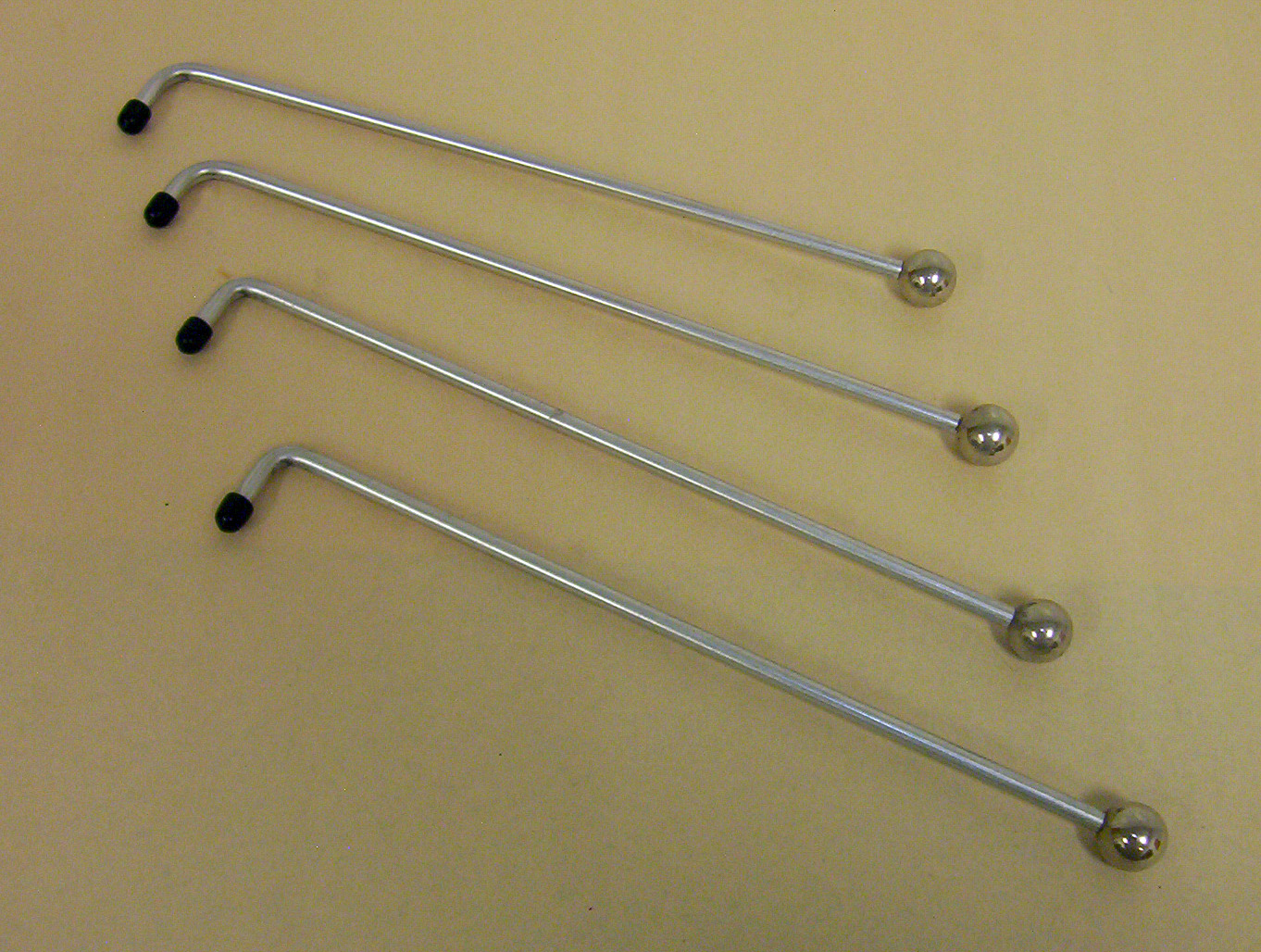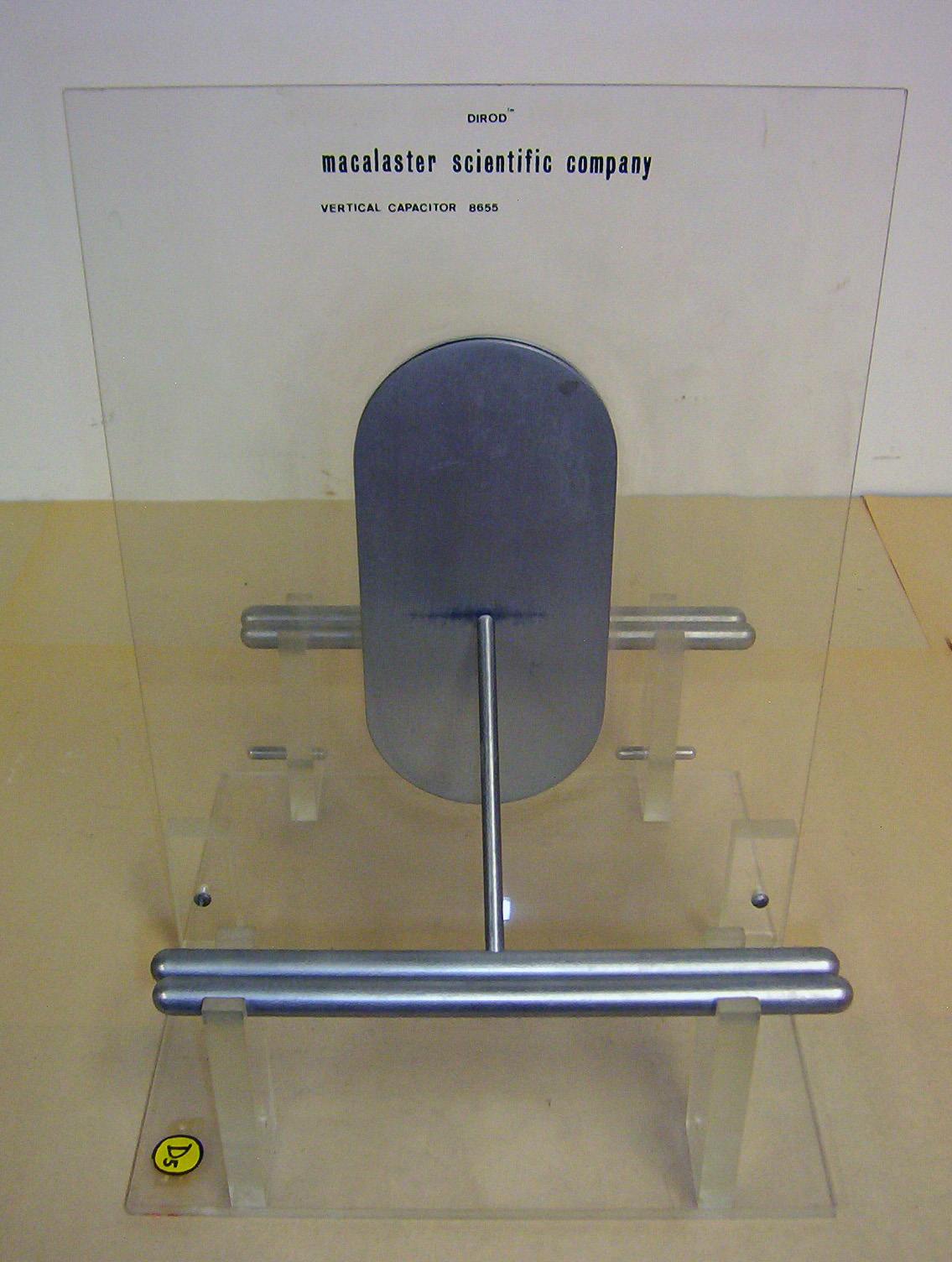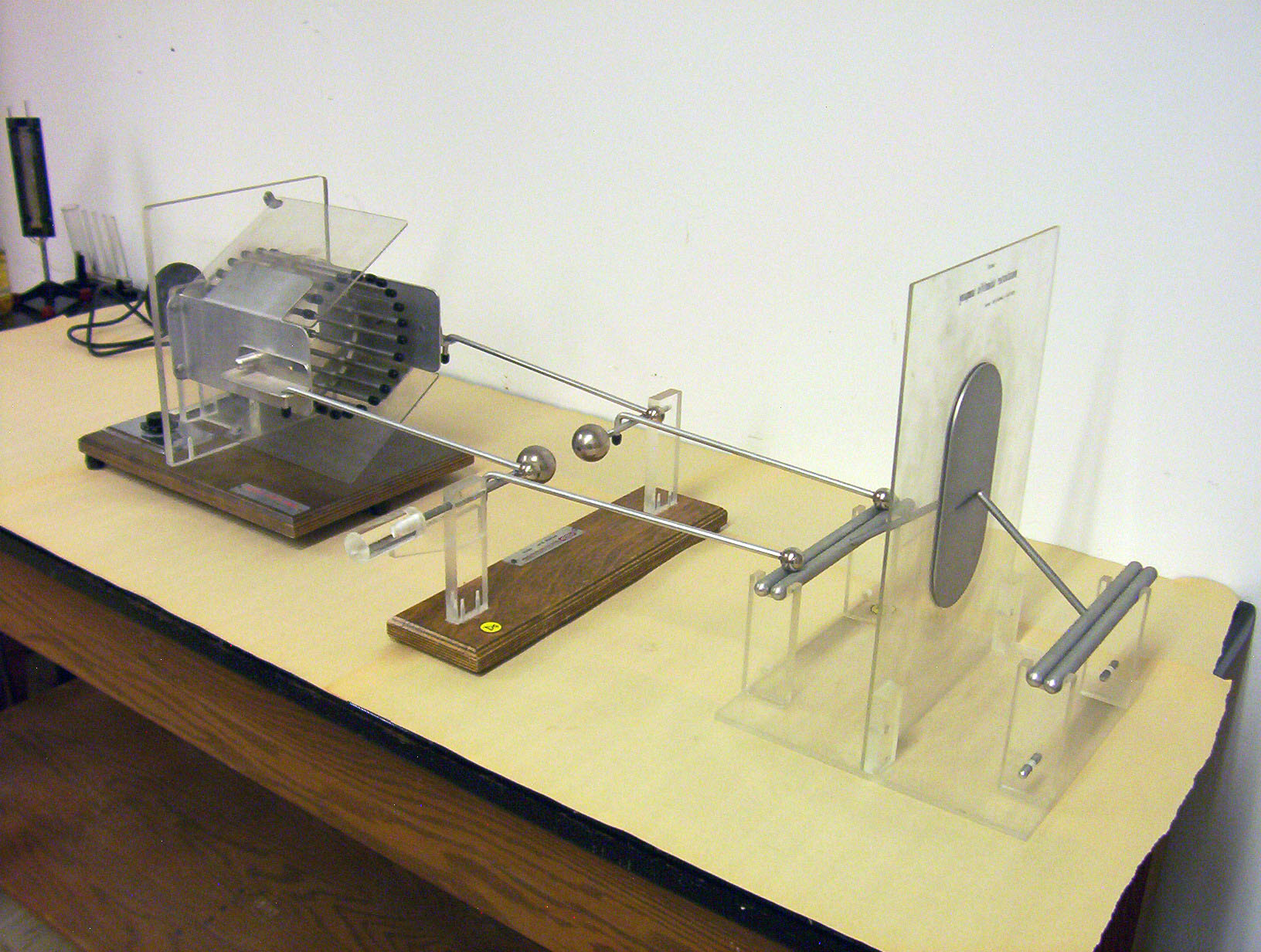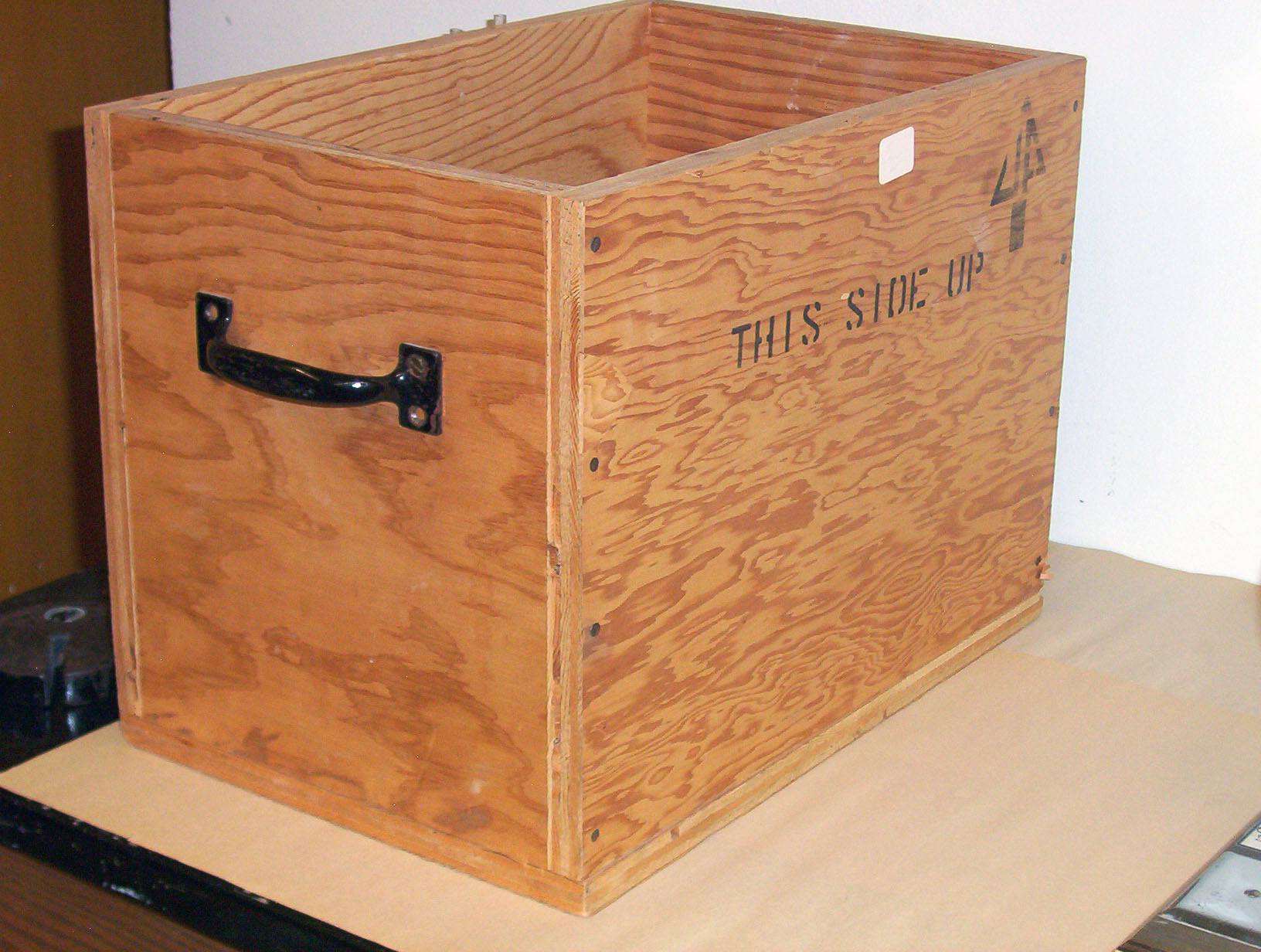The generator is used to create static charge; the capacitor shows that charge can be stored.
The apparatus consists of these parts:
- The Macalaster Scientific Dirod Electrostatic Generator, which can be operated by an adjustable-speed motor, or turned by hand for more precise control (with o-ring belt disconnected)
- The sphere gap, which goes between the generator and device that is charged. A spark will jump this gap (larger gap = higher voltage); be sure to keep the spheres pushed together (grounding the generator) to prevent accidental zapping
- The demonstration capacitor, basically two metal plates separated by 1/8" Plexiglas (yeah, it's that old).
- An assortment of metal rods to connect the generator to the sphere gap and capacitor
Connect the electrostatic generator to the sphere gap, but not yet to the demonstration capacitor. Pull the spheres apart to their maximum separation. Connect the o-ring and run the motor; a spark will jump across the gap repeatedly as the small spheres reach the limit of charge they can hold. Stop motor, close spheres to discharge, and connect to capacitor. Pull apart spheres, run motor and note that it takes longer for a spark to jump the gap, and it's a much larger spark than before.
The electrostatic generator can be used by itself, as it is for the Phys104 Electrostatic Charges experiment. In that experiment, the generator is not plugged in, but rather turned by hand (the o-ring belt is not connected) in the direction of the arrow, to put a charge on a hollow sphere.
The last time I taught College Physics (Spring 1997) I calculated the capacitance of this capacitor for a classroom demo:
- Separation of plates: d ≈ 0.30 cm = 3.0×10-3 m
- Plate area (assume to be a rectangle: A = 0.19 m × 0.089 m = 0.017 m2
- Dielectric constant: κ ≈ 2.75 (I'm not exactly sure of the material separating the plates, so I took the average of Lucite (κ = 2.6) and Plexiglas (κ = 2.9), both as given in the CRC handbook. Yeah, old-school)
- Calculation of capacitance:
- Checking with a capacitance meter, I measured 0.11 - 0.15 nF
- Calculating the stored energy of the capacitor, assuming ΔV (max) = 75 kV):

LDL-L1. Generator and sphere gap are kept in storage box (photo below). Be sure to disconnect the o-ring 'belt' for storage!

The motor side of the generator. Note that o-ring is disconnected,
and the arrow showing rotation direction (CCW)

The business end of the generator; small rubber fingers on each side plate rub against the Gatling-gun structure as it rotates

The sphere gap, opened to its maximum separation

The sphere gap is calibrated in kilovolts; not sure how accurate it is but the maximum separation is rated at 75 kV

Metal connecting rods

The demonstration capacitor. The rounded-rectangle metal plates are separated by 1/8" Plexiglas

The generator is connected to the sphere gap and capacitor
with metal rods

Right side view

The generator is stored in this box; the sphere gap and capacitor sit on the shelf nearby
